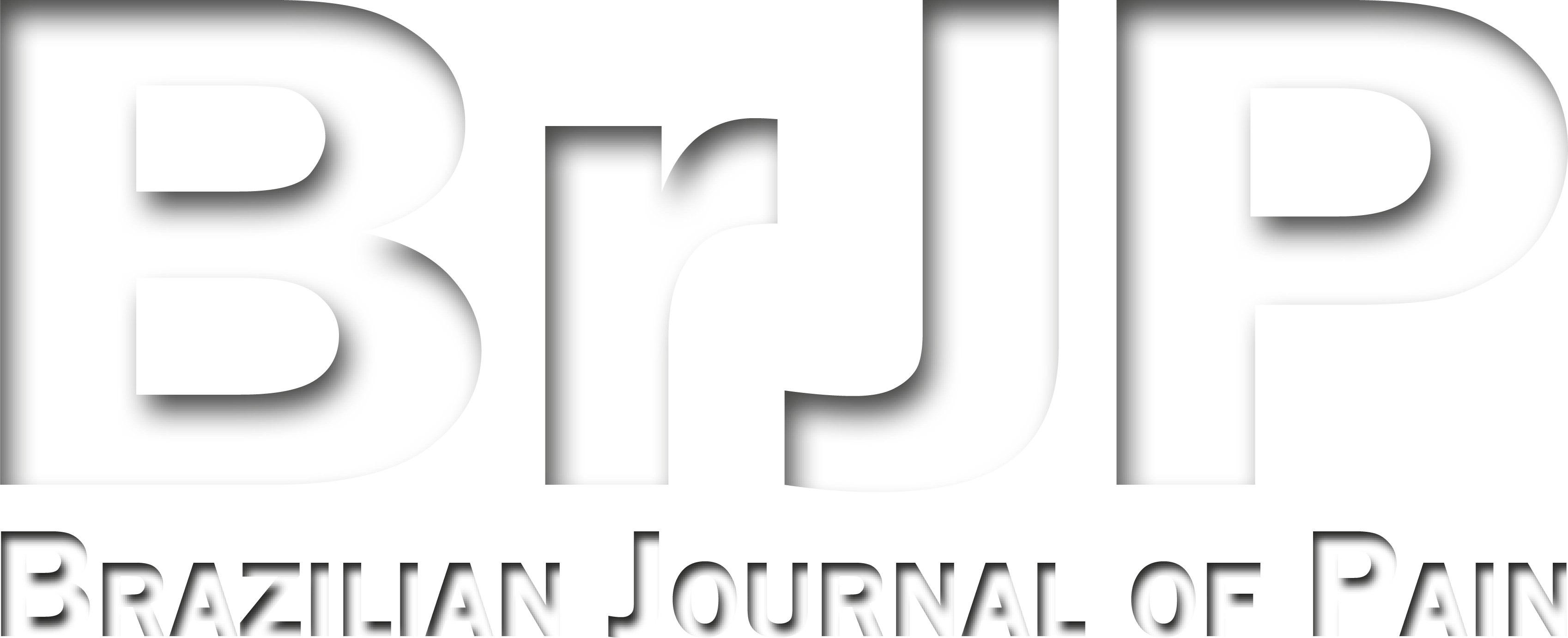Assessment of symptoms of temporomandibular dysfunction in patients undergoing orthodontic treatment using occlusal lift
Avaliação de sintomas de disfunção temporomandibular em pacientes submetidos a tratamento ortodôntico com levantamento oclusal
Isabella Avelar Santos; Gracia Lopes Costa; Rodrigo Bernardes Pereira; Thiago Bezerra Leite; António Sérgio Guimarães; Luciane Lacerda Franco Rocha Rodrigues
Abstract
BACKGROUND AND OBJECTIVES: The use of orthodontic appliances is constantly associated with symptoms of temporomandibular disorder (TMD). In this sense, the present study aimed to investigate the development of TMD symptoms in patients undergoing orthodontic treatment with occlusal lifting.
METHODS: This is a longitudinal, quantitative and descriptive study; 40 patients with an indication for orthodontic treatment, participating in the study. They were evaluated: before the start of orthodontic treatment (T0), 24 hours (T1) and 30 days (T2) after installation of the occlusal elevator. Symptom assessment was carried out by applying the DC/TMD symptom questionnaire. The assessment of psychosocial factors was carried out using the “WISE Clinicians” test (Web Based Interdisciplinary Symptom Evaluation). The data were entered into a Microsoft Excel spreadsheet for statistical analysis using the Chi-Square test, with a significance level of 5%.
RESULTS: In the T1 assessment, 42.50% (n= 17) of patients reported feeling any type of pain and 57.50% (n= 23) did not feel any pain. At T2, the proportion of patients who reported pain was 30% (n= 12), while 70% (n= 28) did not show any symptoms; 10% (n=10) of patients reported pain at both times; 37.50% (n=15) did not experience pain at any time during the assessment; 32.50% (n=13) assessed pain at the first moment and after the second assessment they no longer expressed pain.
CONCLUSION: It can be concluded that occlusal lifting was not significant in terms of pain in most patients and when compared to the control group.
Keywords
Resumo
JUSTIFICATIVA E OBJETIVOS: O uso de aparelhos ortodônticos é constantemente associado a sintomas de disfunção temporomandibular (DTM). Nesse sentido, o presente estudo visou investigar o desenvolvimento de sintomas de DTM em pacientes submetidos a tratamento ortodôntico com lifting oclusal.
MÉTODOS: Trata-se de um estudo longitudinal, quantitativo e descritivo; 40 pacientes com indicação de tratamento ortodôntico participaram do estudo. Eles foram avaliados: antes do início do tratamento ortodôntico (T0), 24 horas (T1) e 30 dias (T2) após a instalação do elevador oclusal. A avaliação dos sintomas foi realizada por meio da aplicação do questionário de sintomas DC/TMD. A avaliação dos fatores psicossociais foi realizada por meio do teste “WISE Clinicians” (Web Based Interdisciplinary Symptom Evaluation). Os dados foram digitados em uma planilha do Microsoft Excel para análise estatística por meio do teste Qui-quadrado, com nível de significância de 5%.
RESULTADOS: Na avaliação do T1, 42,50% (n=17) dos pacientes relataram sentir qualquer tipo de dor e 57,50% (n=23) não sentiram dor alguma. No T2, a proporção de pacientes que manifestaram dor foi de 30% (n=12), enquanto 70% (n=28) não manifestaram nenhum sintoma; 10% (n=10) dos pacientes relataram dor nos dois momentos; 37,50% (n=15) não manifestaram dor em nenhum momento da avaliação; 32,50% (n=13) apresentaram dor no primeiro momento e após a segunda avaliação não manifestaram mais dor.
CONCLUSÃO: Pode-se concluir que o levantamento oclusal não foi significativo em termos de dor na maioria dos pacientes e quando comparado ao grupo controle.
Palavras-chave
References
1 Kmeid E, Nacouzi M, Hallit S, Rohayem Z. Prevalence of temporomandibular joint disorder in the Lebanese population, and its association with depression, anxiety, and stress. Head Face Med. 2020;16(1):19.
2 Gębska M, Dalewski B, Pałka Ł, Kolodziej Ł, Sobolewska E. The Importance of Type D Personality in the Development of Temporomandibular Disorders (TMDs) and Depression in Students during the COVID-19 Pandemic. Brain Sci. 2021;12(1):28.
3 Manfredini D, Lombardo L, Siciliani G. Temporomandibular disorders and dental occlusion. A systematic review of association studies: end of an era? J Oral Rehabil. 2017;44(11):908-23.
4 Al-Ani Z. Occlusion and temporomandibular disorders: a long-standing controversy in dentistry. Prim Dent J. 2020;9(1):43-8.
5 Michelotti A, Rongo R, D’Antò V, Bucci R. Occlusion, orthodontics, and tempo-romandibular disorders: cutting edge of the current evidence. J World Fed Orthod. 2020;9(3S):S15-S18.
6 Al-Moraissi EA, Perez D, Ellis E 3rd. Do patients with malocclusion have a higher prevalence of temporomandibular disorders than controls both before and after or-thognathic surgery? A systematic review and meta-analysis. J Craniomaxillofac Surg. 2017;45(10):1716-23.
7 Yap AU, Chen C, Wong HC, Yow M, Tan E. Temporomandibular disorders in prospective orthodontic patients. Angle Orthod. 2021;91(3):377-83.
8 Huang A, Lee A, Chang HC, Roberts WE. Class III malocclusion, anterior crossbite and missing mandibular first molars: bite turbos and space closure to protract lower second molars. JDO. 2015;56(1):48-63.
9 Janson M, Pithon G. Alternativas para acelerar a colagem dos acessórios inferiores em casos com sobremordida profunda. Rev Clin Ortodon Dental Press. 2008;7(3):27-36.
10 Figueredo C, Pacheco V, Moura W Ortodontia autoligável & contemporânea. São Paulo: CVSA; 2016.
11 Antunes Ortega AC, Pozza DH, Rocha Rodrigues LL, Guimarães AS. Relationship Between orthodontics and temporomandibular disorders: a prospective study. J Oral Facial Pain Headache. 2016;30(2):134-8.
12 Michelotti A, Cioffi I, Landino D, Galeone C, Farella M. Effects of experimental occlusal interferences in individuals reporting different levels of wake-time parafunctions. J Orofac Pain. 2012;26(3):168-75.
13 Lerman SF, Mun CJ, Hunt CA, Kunatharaju S, Buenaver LF, Finan PH, Campbell CM, Phillips J, Fernandez-Mendoza J, Haythornthwaite JA, Smith MT. Insomnia with objective short sleep duration in women with temporomandibular joint disorder: quantitative sensory testing, inflammation and clinical pain profiles. Sleep Med. 2022;90:26-35.
14 Mun CJ, Weaver KR, Hunt CA, Owens MA, Phillips J, Lerman SF, Buenaver LF, Colloca L, Tennen H, Haythornthwaite JA, Finan PH, Smith MT. Pain expectancy and positive affect mediate the day-to-day association between objectively measured sleep and pain severity among women with temporomandibular disorder. J Pain. 2022;23(4):669-79.
15 Michelotti A, Iodice G. O papel da ortodontia nas disfunções temporomandibulares. Rev Reabil Oral. 2010;37(1):411-29.
Submitted date:
03/25/2024
Accepted date:
07/27/2024


